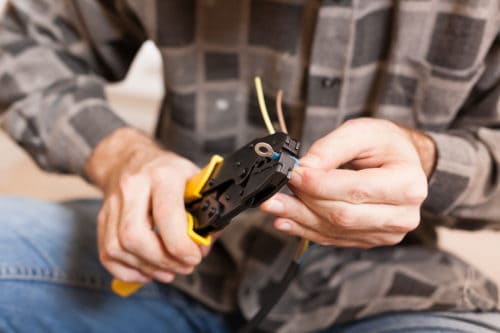Guide to Crimp Quality in Wire Harnesses and Cable Assemblies
Crimping is among the most crucial steps when assembling wire harnesses or cable assemblies. The crimping process involves joining wires within the harness. Many steps of this process can be automated, such as stripping, cutting, and crimping terminals on either side of the wires. Whether manual or automated, proper wire crimping requires the appropriate tools and materials and must follow certain steps.
What Is Wire or Cable Crimping?
Crimping entails installing connectors on the ends of cables using a crimping tool. The process begins by placing the connector into the crimping tool. Next, you place the exposed wire into the connector at the end of the cable. The final step requires installers to squeeze the crimping tool’s handle, joining the connector to the cable.
Why Is It Important to Have Good Crimp Quality?
High-quality crimps form gas-tight joints, which result from compressing specially designed splice bands or crimp terminations with electrical components, such as cables and wires. The resulting terminal causes the reshaping of strands in a wire to form a solderless electrical connection that features low resistance.
Joints must be gas-tight to prevent the corrosion of metals from moisture and oxygen. They must also be strong, with a single joint that features no breaks or segments. The crimping process also creates microconnections in wires that enable electrical current to travel through the connection. When crimping wires, it’s important to avoid over-tightening, as this reduces the cross-section of the wire. Additionally, crimping errors such as the incorrect wire ratio or insufficient tightening may result in burnout or hotspots. High-quality crimps will last for up to a decade or longer.
Crimp Quality Standards
Specifications for crimp quality only have one common requirement: they must meet the crimp height and width specifications that the terminal manufacturer requires.
Regarding crimp height, the A-260 specification is the only one that allows for optional crimp height measurements, and these measurements are only optional if crimping involves pull testing. Both the A-260 and VW specifications require the use of a micrometer with a blade and a point. This helps minimize the risk of flash affecting the height measurement.
The majority of companies don’t measure crimp width since it’s a fixed tooling dimension. However, the USCAR and VW specifications list two crimp widths, including one that’s measurable on the crimp terminal and another that’s non-measurable.
Tolerances may also dictate crimp height. The VW and USCAR specifications indicate specifications for tolerance based on the size of the wire. The following are the tolerances and the wire sizes that correspond to them.
Wire Size |
Tolerances
|
| USCAR | |
| ≥ 8.0 mm² | ± 0.10 mm |
| > 0.35 mm² | ± 0.05 mm |
| ≤ 0.35 mm² | ± 0.03 mm |
| VW 60330 | |
| > 2.5 mm | ± 0.10 mm |
| 0.5 – 2.5 mm | ± 0.05 mm |
| 0.22 – 0.5 mm | ± 0.03 mm |
View more about Crimp Quality Guidelines here.
Crimping vs. Soldering
Crimping and soldering share certain similarities. For instance, both processes help create connections for cables, and they produce long-lasting and high-performing cable connections. However, they also feature certain differences to keep in mind.
Crimping
Crimping connects contacts to wires by applying pressure. This process relies on a crimping tool, with connections formed when squeezing the tool’s handles together to connect the wire and contact. Crimping works best for applications that need consistent durability in harsh conditions.
Some specific advantages of crimping include:
- Crimping is fast and simple, allowing for either automation using a crimping machine or manual processes using crimping tools
- Forms an air-tight connection between the cable and connector to create a consistently reliable joint
- Increased consistency compared to soldering
However, crimping comes with one potential disadvantage: it requires tooling specific to the connector’s contact, which may lead to steep costs.
Soldering
Soldering is a traditional wire termination method that’s more cost-effective than crimping. The process entails heating, melting, and then cooling alloys comprising tin, silver, brass, or lead into solder cups, bonding contacts to wire conductors. Industrial and general-duty applications requiring dependable power and signal connections often use soldering instead of crimping.
While soldering offers certain benefits such as affordability, some disadvantages of soldering include:
- Soldering may cause damage by generating heat in the connector, contacts, and cables
- It’s less resistant to vibration and corrosion
- The process requires more time to complete than crimping
Wire Harnesses and Cable Assemblies from Conwire
The crimping process offers several benefits that make it a favorable choice over soldering. At Consolidated Electronic Wire & Cable, we offer various custom solutions for electronic wire and cable products. We have provided superior products for a wide range of applications, with more than 100 years of experience behind us. You can discover more about our cable assemblies and wiring harnesses or read more about us to find out what we can do for you.
If you would like to learn more about our custom cable assemblies and wire harnesses, along with other custom solutions we offer, contact us today.




 () Quote Cart
() Quote Cart